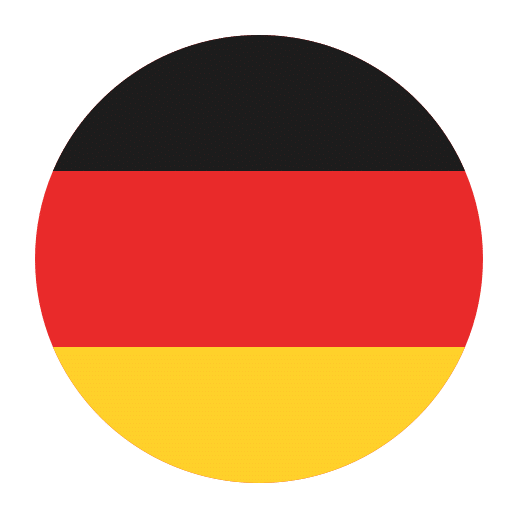Learning a new language is an exciting journey, and part of that journey involves being able to describe the world around you. One essential aspect of any language is being able to describe people, especially their appearance. If you’re learning German, you’ll find that it can be both challenging and rewarding to master the vocabulary and grammar necessary to describe someone’s appearance accurately. In this article, we’ll delve into the various ways to describe appearance in German, covering everything from basic vocabulary to more complex sentence structures.
Basic Vocabulary for Describing Appearance
Let’s start with some foundational vocabulary. Here are some essential German words and phrases you’ll need to describe someone’s appearance:
– **Körper** (body)
– **Größe** (height)
– **Gewicht** (weight)
– **Haare** (hair)
– **Augen** (eyes)
– **Gesicht** (face)
– **Haut** (skin)
These are the building blocks that you will use to construct more detailed descriptions.
Describing Height and Build
When describing someone’s height, you can use the following adjectives:
– **groß** (tall)
– **klein** (short)
– **mittelgroß** (medium height)
For describing someone’s build or body type, you might use:
– **schlank** (slim)
– **dünn** (thin)
– **kräftig** (strong, sturdy)
– **mollig** (chubby)
– **dick** (fat)
Here are some example sentences:
– Er ist **groß** und **schlank**. (He is tall and slim.)
– Sie ist **klein** und **mollig**. (She is short and chubby.)
– Er ist **mittelgroß** und **kräftig**. (He is medium height and strong.)
Describing Hair
Hair is another critical aspect of appearance. Here are some common terms for describing hair in German:
– **Haarfarbe** (hair color)
– **blond** (blonde)
– **braun** (brown)
– **schwarz** (black)
– **rot** (red)
– **grau** (gray)
– **Haarlänge** (hair length)
– **kurz** (short)
– **mittellang** (medium length)
– **lang** (long)
– **Haartyp** (hair type)
– **glatt** (straight)
– **lockig** (curly)
– **wellig** (wavy)
Some example sentences:
– Sie hat **langes, blondes** Haar. (She has long, blonde hair.)
– Er hat **kurzes, schwarzes** Haar. (He has short, black hair.)
– Sie hat **mittellanges, lockiges** Haar. (She has medium-length, curly hair.)
Describing Eyes
The eyes are often considered the windows to the soul, and in German, you have various ways to describe them:
– **Augenfarbe** (eye color)
– **blaue** Augen (blue eyes)
– **braune** Augen (brown eyes)
– **grüne** Augen (green eyes)
– **graue** Augen (gray eyes)
– **Augenform** (eye shape)
– **große** Augen (big eyes)
– **kleine** Augen (small eyes)
– **mandelförmige** Augen (almond-shaped eyes)
Some example sentences:
– Er hat **blaue** Augen. (He has blue eyes.)
– Sie hat **große, grüne** Augen. (She has big, green eyes.)
– Er hat **kleine, braune** Augen. (He has small, brown eyes.)
Describing the Face
When it comes to the face, you’ll want to be able to describe its shape and features. Here are some useful terms:
– **Gesichtsform** (face shape)
– **rund** (round)
– **oval** (oval)
– **eckig** (square)
– **herzförmig** (heart-shaped)
– **Gesichtszüge** (facial features)
– **Nase** (nose)
– **kleine** Nase (small nose)
– **große** Nase (big nose)
– **spitze** Nase (pointy nose)
– **stupsige** Nase (snub nose)
– **Mund** (mouth)
– **großer** Mund (big mouth)
– **kleiner** Mund (small mouth)
– **Lippen** (lips)
– **volle** Lippen (full lips)
– **schmale** Lippen (thin lips)
Some example sentences:
– Sie hat ein **rundes** Gesicht mit einer **kleinen** Nase und **vollen** Lippen. (She has a round face with a small nose and full lips.)
– Er hat ein **eckiges** Gesicht und einen **großen** Mund. (He has a square face and a big mouth.)
Describing Skin
Skin tone and condition are also important aspects of appearance. Here are some terms you can use:
– **Hautfarbe** (skin color)
– **hell** (light)
– **dunkel** (dark)
– **gebräunt** (tanned)
– **Hauttyp** (skin type)
– **glatt** (smooth)
– **rau** (rough)
– **faltenfrei** (wrinkle-free)
– **faltenreich** (wrinkled)
Some example sentences:
– Sie hat **helle, glatte** Haut. (She has light, smooth skin.)
– Er hat **dunkle, faltenreiche** Haut. (He has dark, wrinkled skin.)
Using Adjectives and Adjective Endings
In German, adjectives change their endings depending on the gender, case, and number of the noun they describe. This concept is known as **adjective declension**. Here’s a brief overview of how to use adjectives correctly when describing appearance.
When adjectives precede a noun, they take different endings based on the definite or indefinite article that comes before the noun. Here are some examples:
– **Der** große Mann (The tall man)
– **Die** schöne Frau (The beautiful woman)
– **Das** kleine Kind (The small child)
When using indefinite articles:
– **Ein** großer Mann (A tall man)
– **Eine** schöne Frau (A beautiful woman)
– **Ein** kleines Kind (A small child)
Notice how the endings of the adjectives change depending on the gender of the noun and the article used.
Constructing Sentences
Now that you have a grasp of the basic vocabulary and adjective endings, let’s look at how to construct sentences to describe someone’s appearance.
Simple Sentences
For beginners, starting with simple sentences is a good way to practice. Here are some examples:
– Sie ist **groß** und hat **lange, blonde** Haare. (She is tall and has long, blonde hair.)
– Er ist **klein** und hat **braune** Augen. (He is short and has brown eyes.)
Complex Sentences
As you become more comfortable with the language, you can start forming more complex sentences by combining multiple descriptive elements:
– Der Mann, der neben mir steht, ist **mittelgroß**, hat **kurzes, schwarzes** Haar und **braune** Augen. (The man standing next to me is medium height, has short, black hair, and brown eyes.)
– Die Frau, die ich gestern gesehen habe, hat ein **oval**es Gesicht, **blaue** Augen und **welliges** Haar. (The woman I saw yesterday has an oval face, blue eyes, and wavy hair.)
Practice Makes Perfect
To become proficient in describing appearance in German, practice is essential. Here are some tips to help you practice:
Use Flashcards
Create flashcards with the German word on one side and the English translation on the other. This can help you memorize vocabulary more efficiently.
Describe People Around You
Practice describing your friends, family, or even people you see in public. Try to use as many descriptive words as possible.
Watch German Media
Watching German movies or TV shows can help you see and hear how native speakers describe appearance. This will also help you with pronunciation and sentence structure.
Engage in Conversations
If you have the opportunity, engage in conversations with native German speakers or fellow learners. Describe people and ask for feedback to improve your skills.
Conclusion
Describing appearance in German involves a variety of vocabulary, from basic terms for body parts to more complex adjectives and sentence structures. By mastering these elements, you will be able to give detailed and accurate descriptions of people, enhancing your overall language skills. Remember, practice is key, so use every opportunity to describe the world around you in German. Happy learning!

